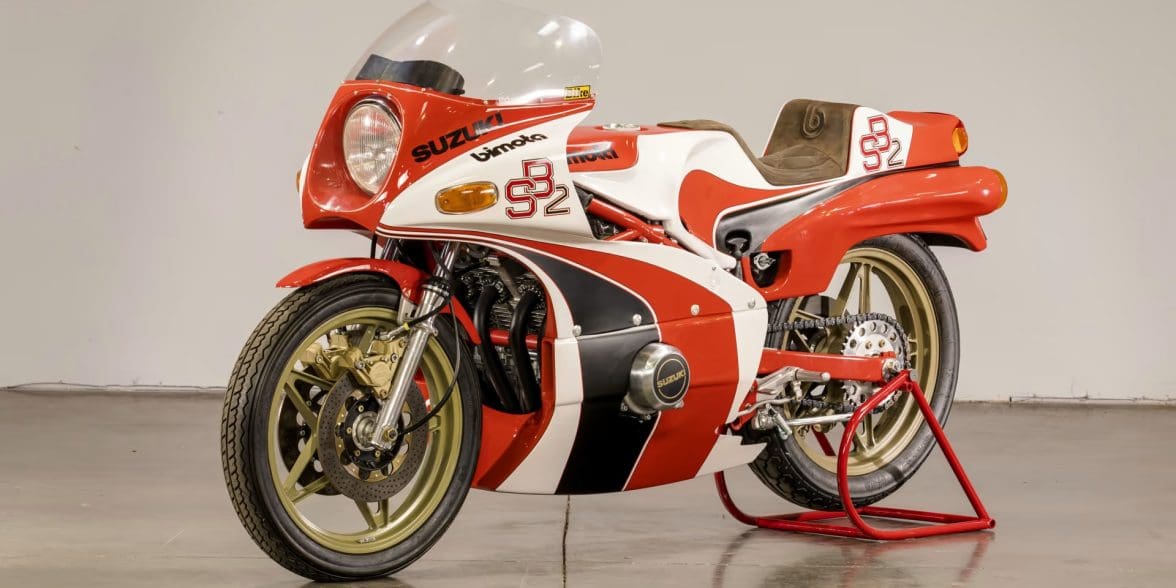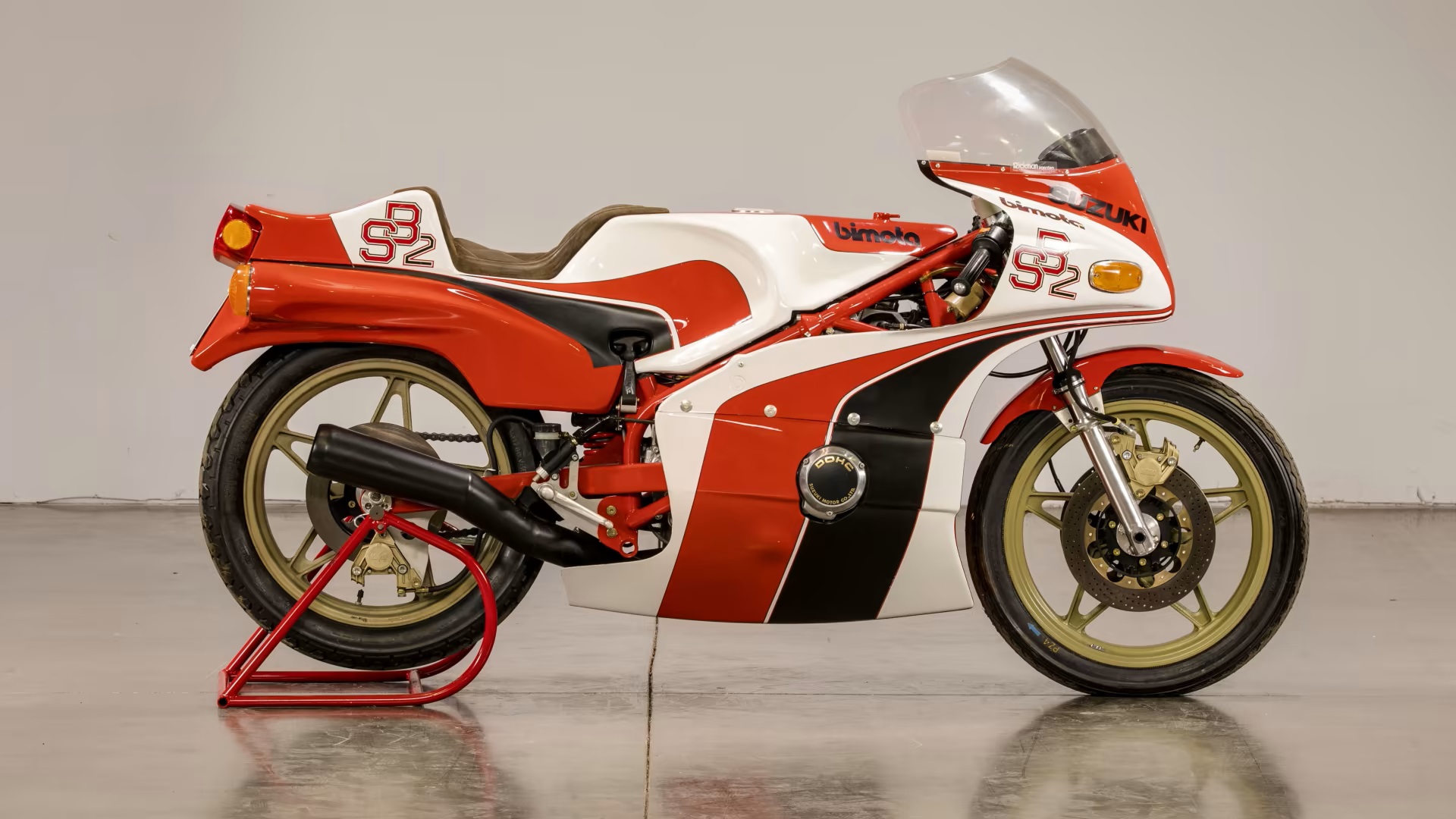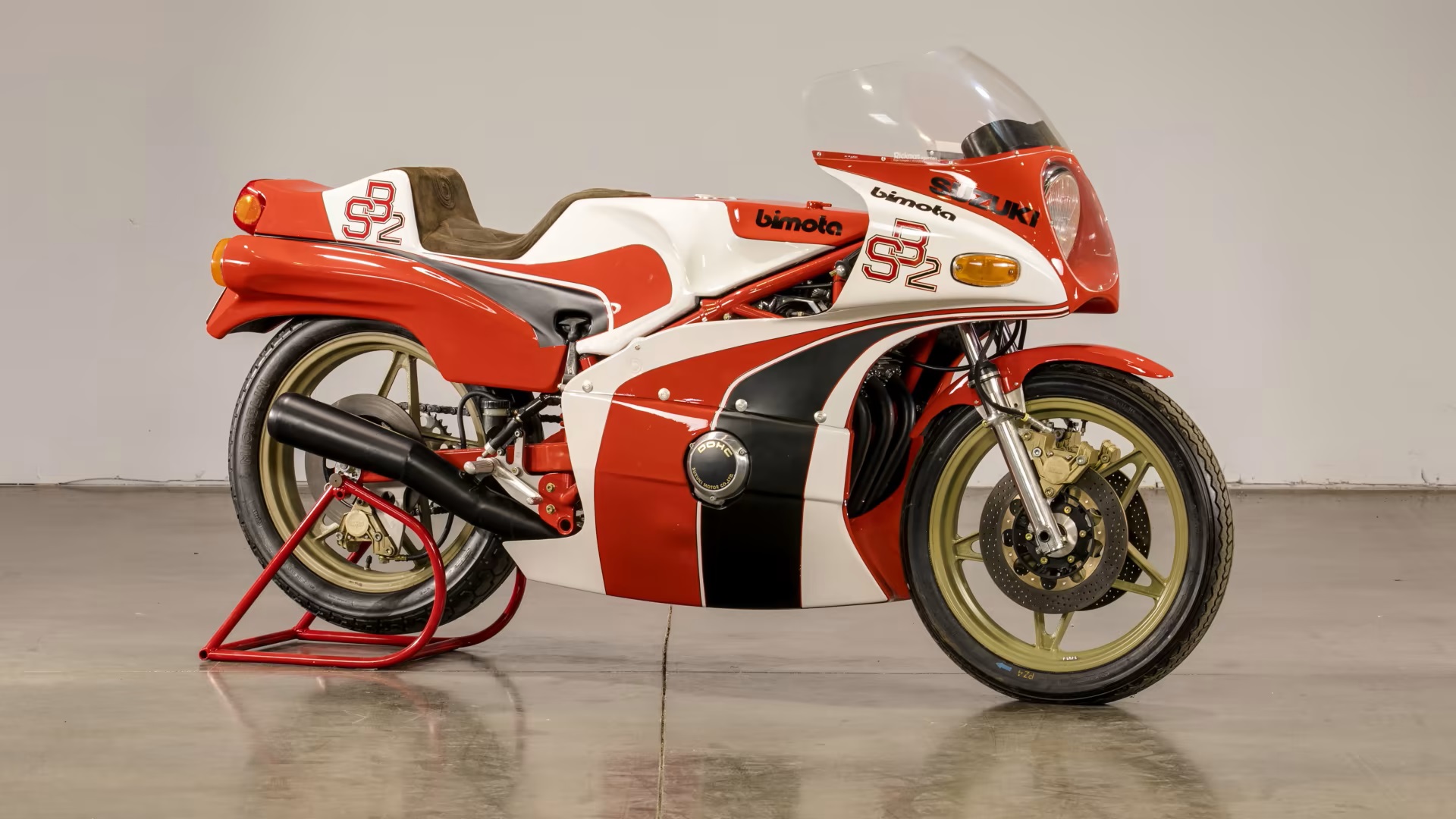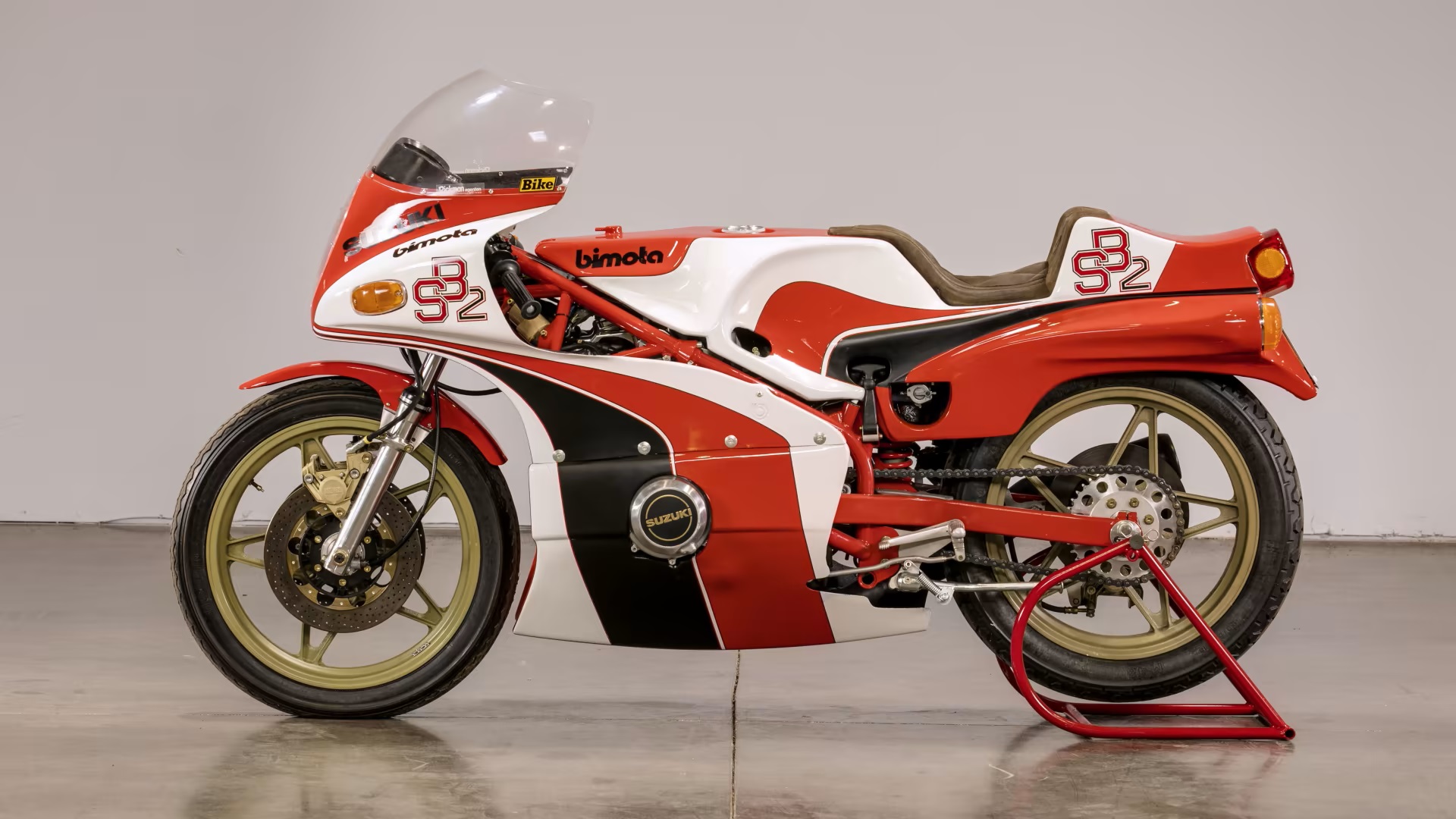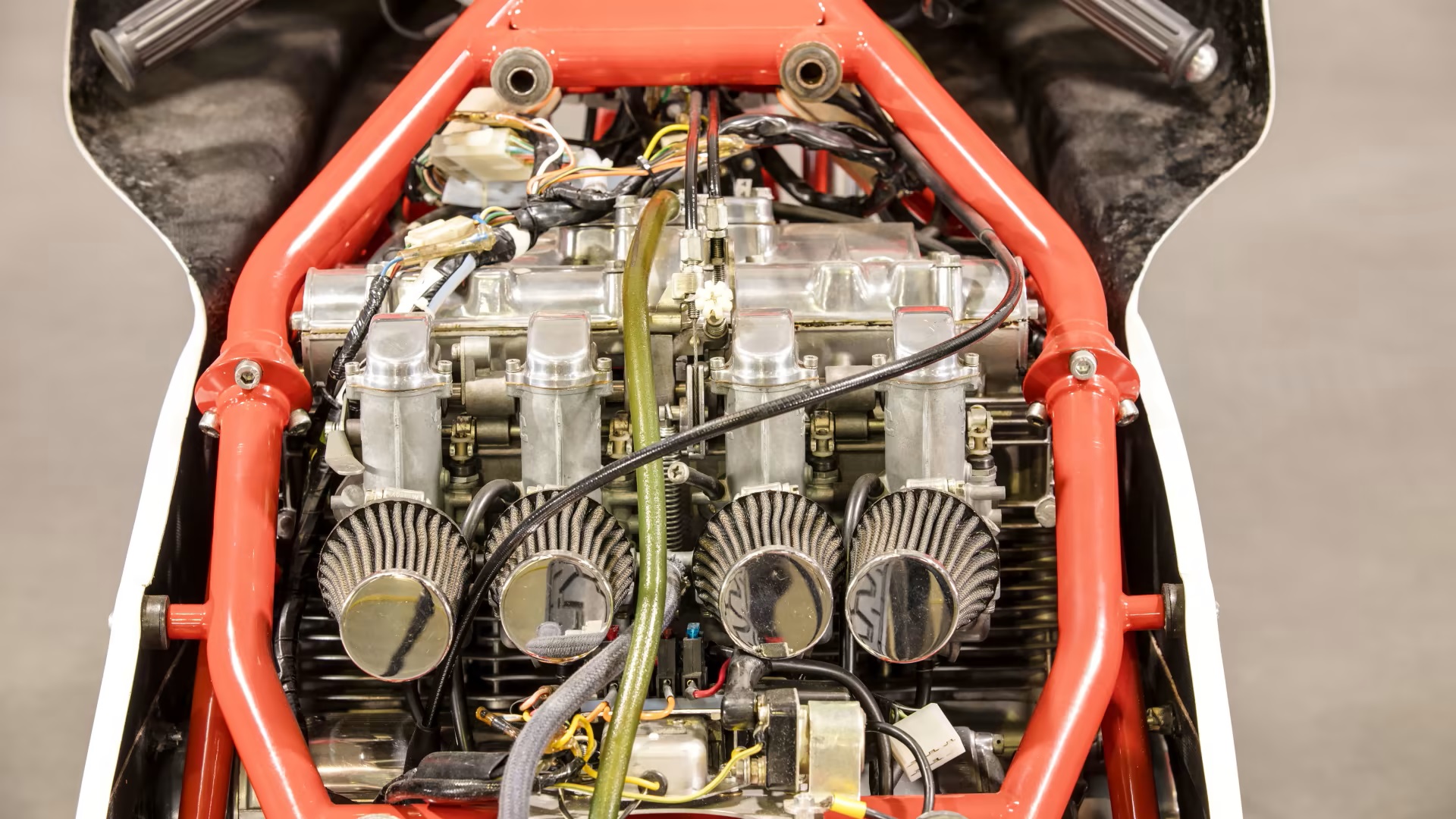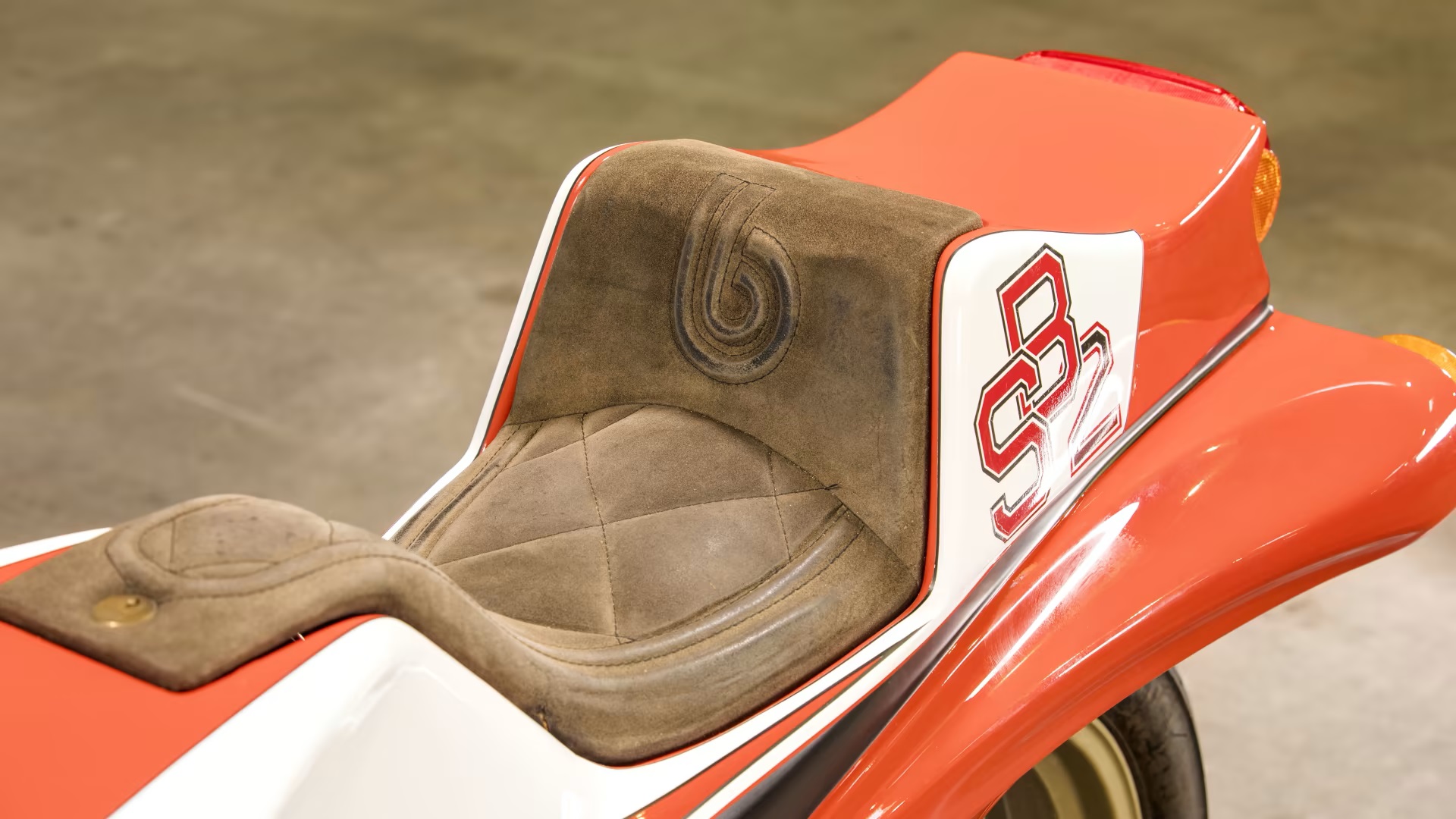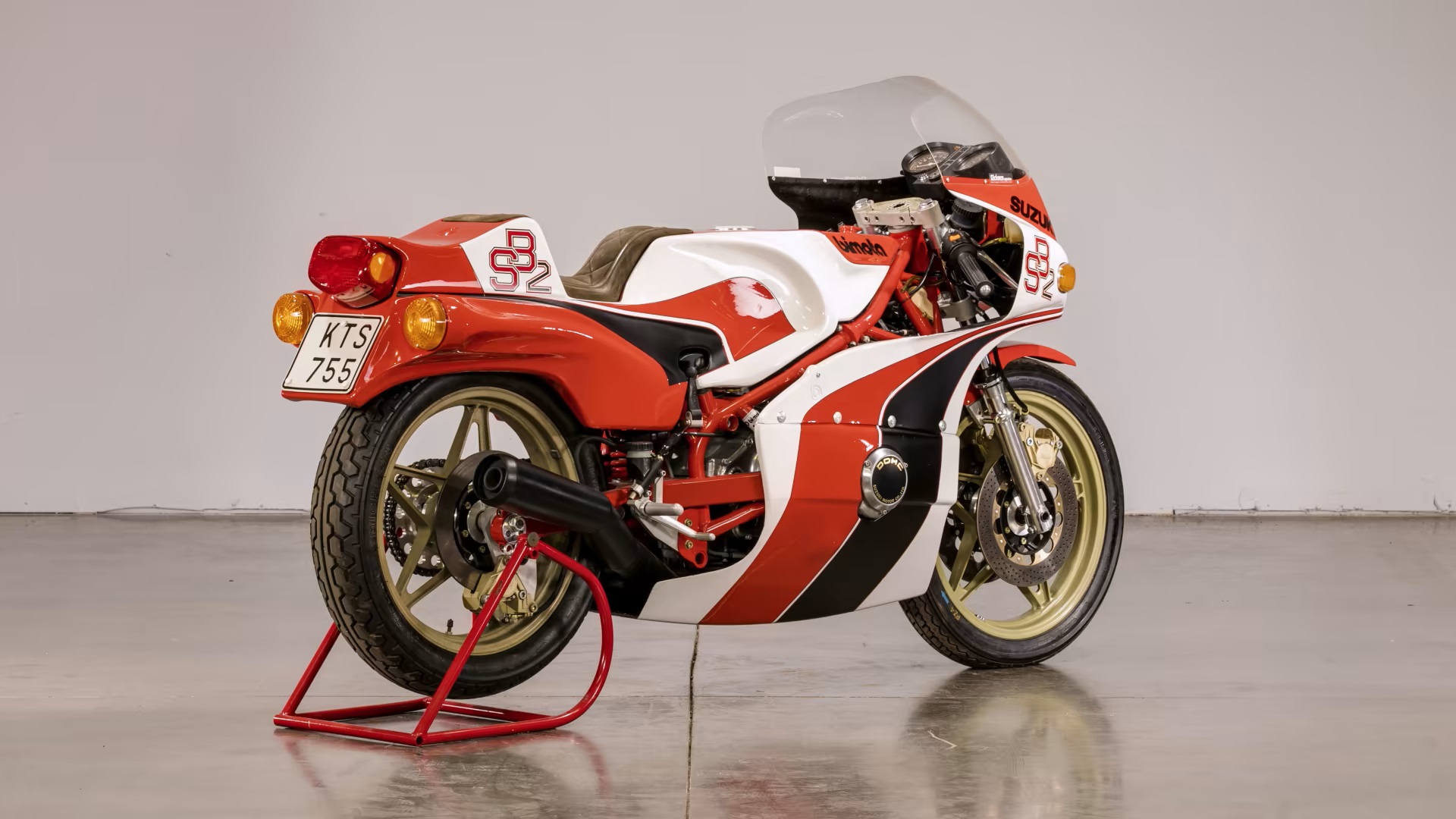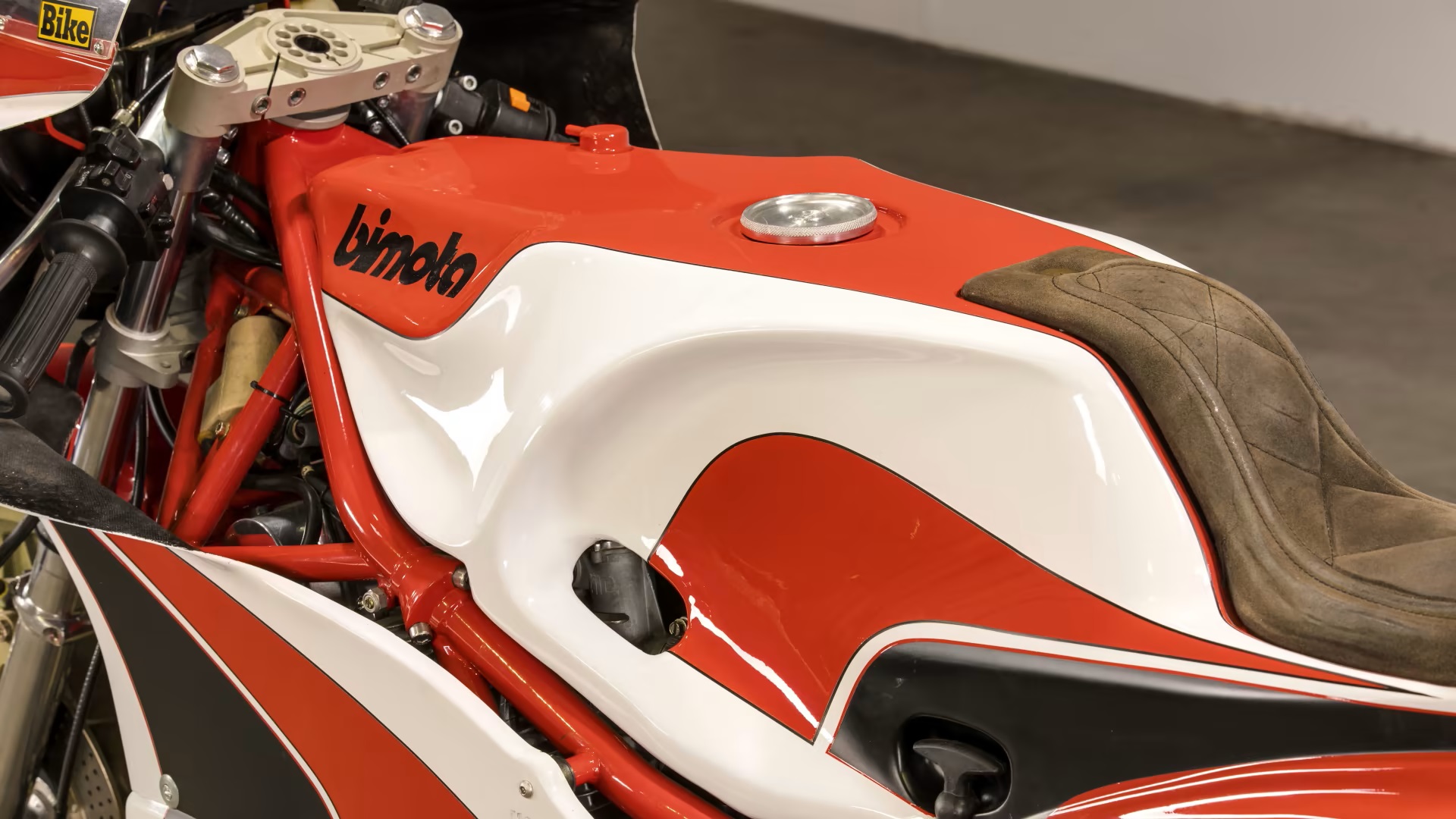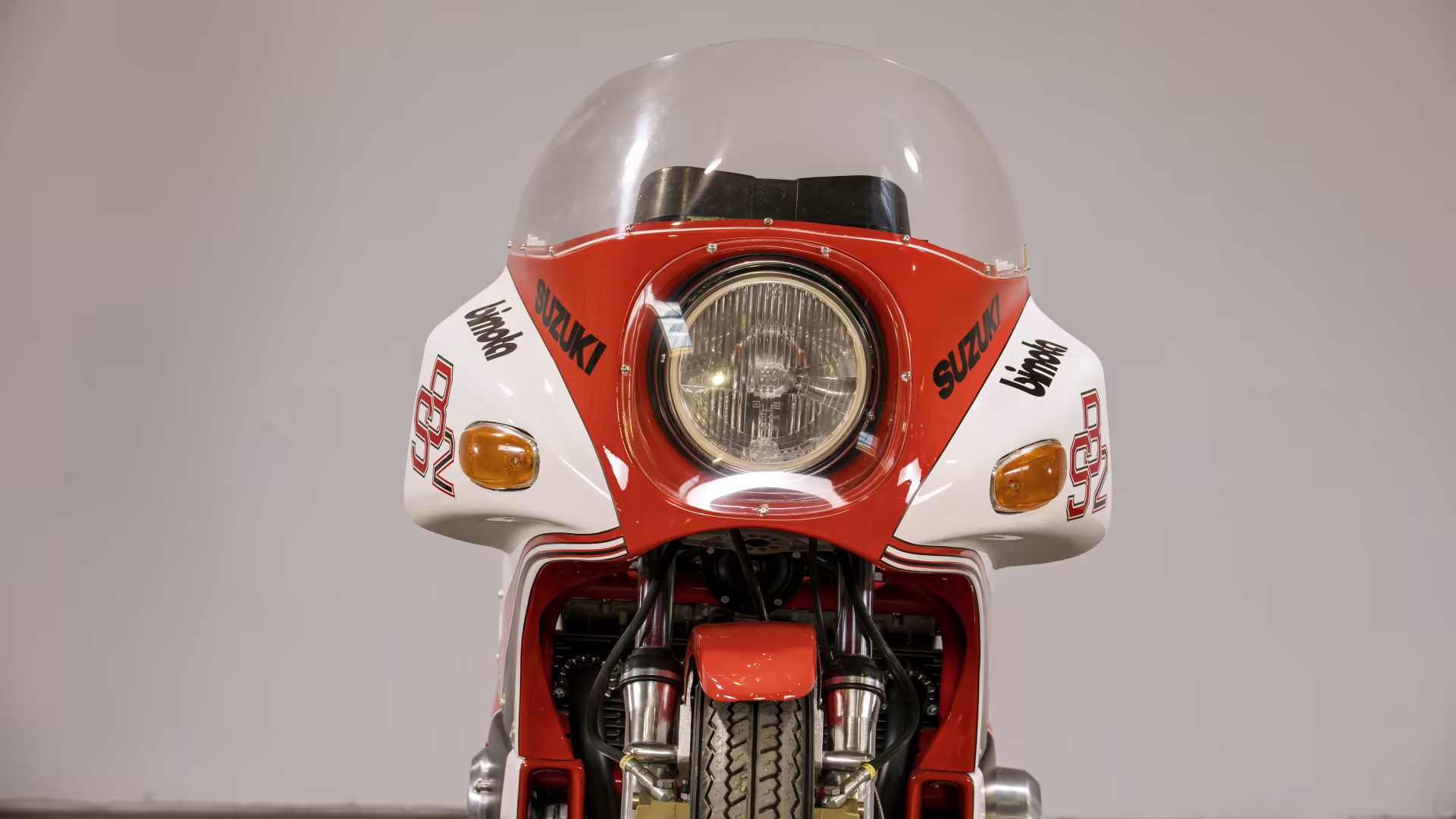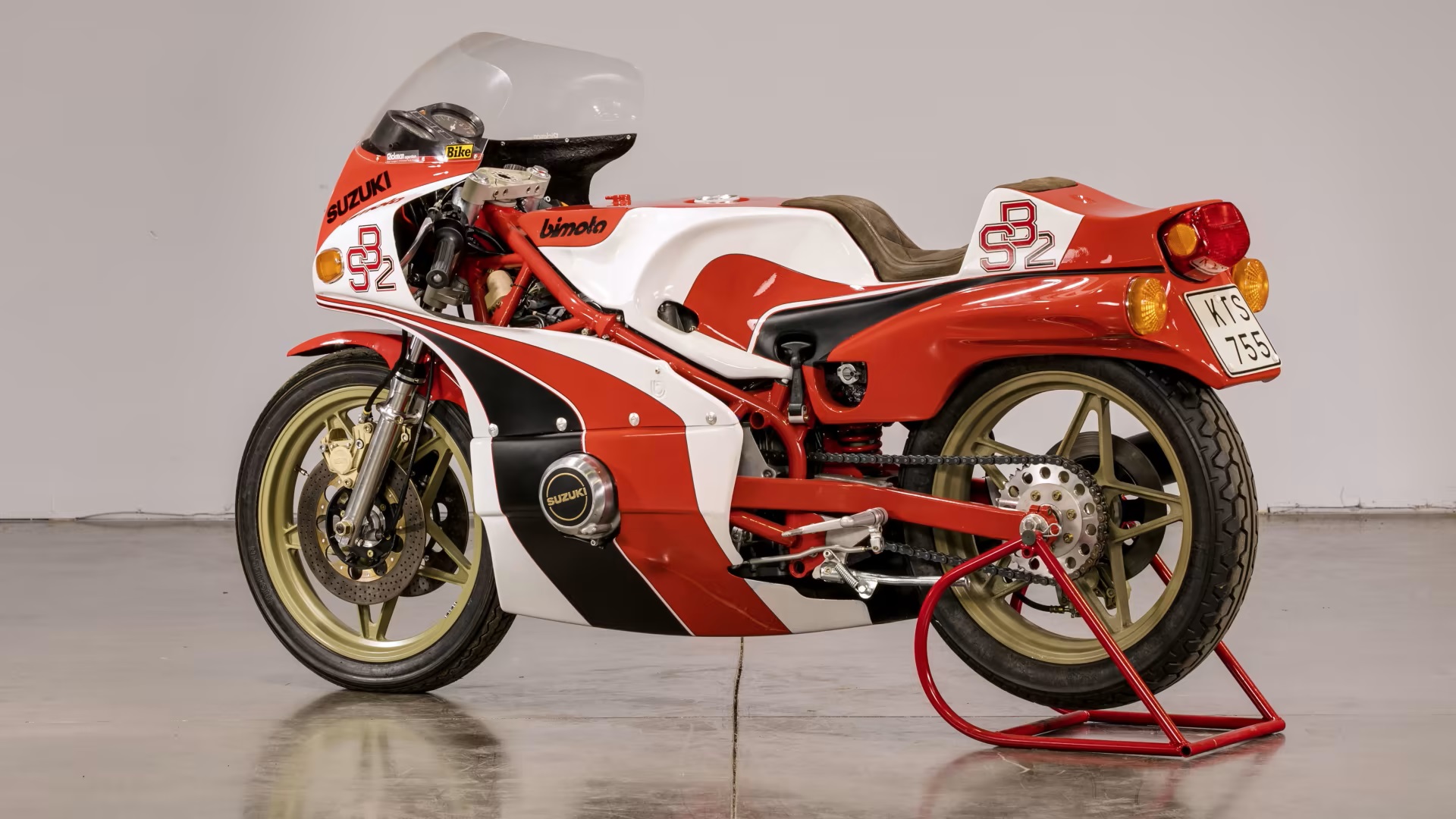The 1977 Bimota SB2, an epitome of cutting-edge design, emerged as the forefront of superbikes, standing out as one of the most alluring motorcycles ever made. Marking Bimota’s foray into street-legal bikes, the company, founded by Valerio Bianchi, Giuseppe Morri, and Massimo Tamburini, transitioned from building racing chassis to revolutionizing motorcycle engineering.
Recognizing a gap in road-holding standards, especially in Japan, the trio developed the SB2 around existing motors like the Honda 750 Four, debuting the HB1 chassis in 1973. The SB2, unveiled at the 1976 Bologna Motor Show, featured a tuned Suzuki GS750 DOHC engine expanded to 850cc with Yoshimura enhancements. Its ultralight chromoly trellis frame, weighing approximately 20 pounds, boasted an adjustable steering-head angle and monoshock rear suspension.
Designed by Tamburini, the SB2 showcased 1970s aesthetics with a fiberglass unibody and a removable aluminum fuel tank. Industry lore surrounds the bike’s sleek lines, integrating rear turn signals into the seat and initially intending for them to house exhaust pipes—altered due to excessive heat. Weighing 432 pounds, 66 pounds lighter than the stock Suzuki GS750, the SB2 delivered 78 HP at 8,700 RPM, achieving a top speed of 135 MPH. Priced at $4,000, three times that of a Suzuki GS750, the SB2 represented a fusion of custom craftsmanship and performance prowess.
Source: Mecum Auctions


